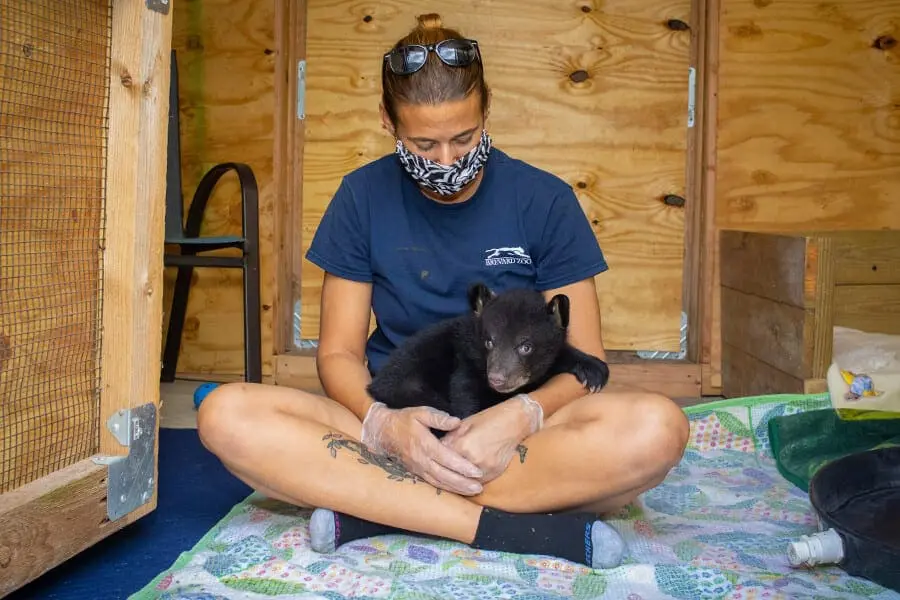

Lauren’s life revolves around Brody right now, and she’s more than up to the challenge.
You may have noticed that in many of our videos and photos of baby animals being hand-raised at the Zoo, one particular staff member always seems to have the task of taking care of said newborn. While we do think that curator of animals Lauren Hinson has a fabulous job, it’s important to understand that her success in rearing these youngsters is due to her extensive professional history, experience and many sleepless nights.
Lauren has been caring for animals for 17 years while earning a bachelor’s degree in biology and a master’s certificate in animal behavior and conservation. Beginning her career at a small Florida institution where she gained lots of hands-on experience, Lauren went on to work for several animal care facilities, including the Bronx Zoo in New York City, before moving to the Space Coast. She has been with us for six years now.
Over the years, she has hand-raised many different kinds of animals, including tigers, gibbons, kangaroos, monkeys, a sloth and, most recently, Brody the Florida black bear.
“We prefer for animals to be reared naturally by their parents,” said Lauren. “Not only is it less work for us, but it also gives the baby a stronger chance of survival. Unfortunately, that isn’t always possible; animals sometimes abandon their young, or there are health complications that require lots of hands-on attention.”

Lauren hand-reared Lilly the red kangaroo in 2017 after Lilly was abandoned by her mother. The two share a special bond to this day.
Hand-rearing an individual from birth is no easy feat. Lauren says that although difficult and time-consuming, “it’s a rewarding process.” Each animal requires different length of care and techniques to successfully raise. For many species, the life of that animal is almost solely in the hands of its caretaker for at least the first month after birth.
Bottle-feeding itself can be challenging. Getting an animal to accept a bottle from a human can take up to a week or longer. This often involves syringe-feeding an animal small amounts of liquid repeatedly to allow it to become accustomed to taking milk or formula. Once an animal is comfortable taking the bottle, they may need to be fed as often as every two to three hours around the clock.
In addition to feeding, baby animals must also be stimulated to go to the bathroom each time they eat. Some species, such as kangaroos, must be given the opportunity to exercise daily when they reach a certain age. Some require socialization. Others need medication or probiotics.
Although we are quick to “ooh” and “aww” over our adorable animal babies, it is important to remember just how much work goes into hand-rearing. At Brevard Zoo, we are fortunate to have staff members like Lauren who are experienced and up for the task!
This is a challenging time for our Zoo. As a not-for-profit organization that receives no recurring government funds, we rely on earned income from admissions and memberships—and we stand to lose one third of our annual income while we are temporarily closed. That’s why now, more than ever, your support is critical. You can help make an impact by purchasing or renewing a membership, donating to our fund, creating a Facebook fundraiser for the Zoo or simply spreading the word.
